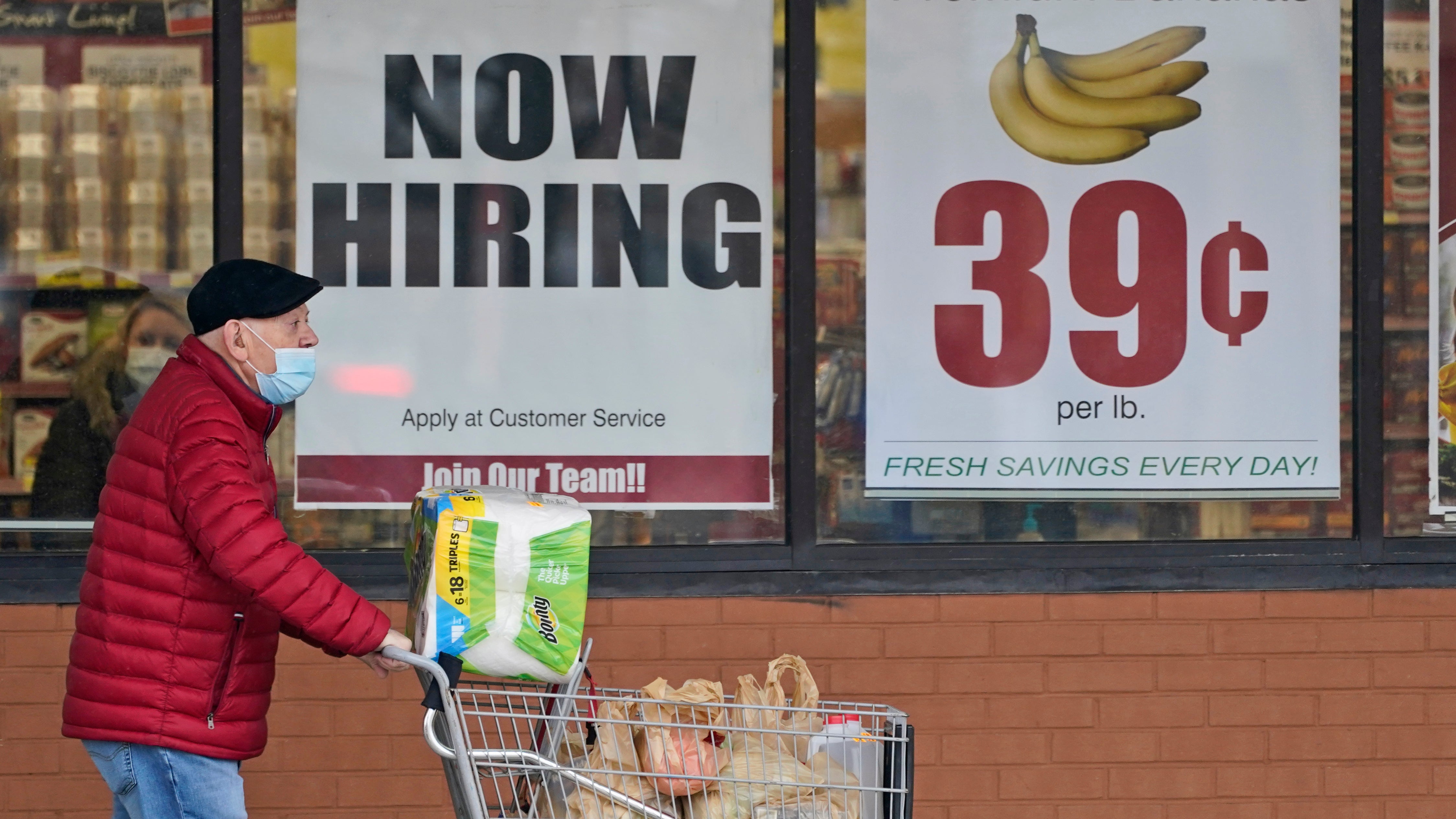Big US job gain expected, if employers found enough workers
America’s employers likely delivered another month of robust hiring in April, reinforcing the economy’s steady rebound from the pandemic recession

With viral cases declining, consumers spending again and more businesses easing restrictions, America's employers likely delivered another month of robust hiring in April, reinforcing the economy's steady rebound from the pandemic recession.
Economists have forecast that the nation added 975,000 jobs last month, according to a survey by FactSet, after adding 916,000 in March, and that the unemployment rate slipped from 6% to 5.8%. The size of such job gains was essentially unheard-of before the pandemic.
The government will issue the April jobs report at 8:30 a.m. Eastern time Friday.
Yet most of the hiring represents a bounce-back after tens of millions of jobs were lost when the pandemic flattened the economy 14 months ago. Even if economists’ estimate for April hiring proves accurate, the economy would remain about 7 million jobs short of its pre-pandemic level.
At the same time, optimism about a sustained recovery is rising. Americans are, on average, flush with cash, thanks in part to $1,400 stimulus checks that have gone to most adults and to savings that many affluent households managed to build up during the pandemic. Fueled by that extra money, Americans are buying more homes and cars, boosting restaurant and retail sales and filling more airline seats.
And most economists expect outsize job growth to continue in the coming months as vaccinations are widely administered and trillions in government aid spreads through the economy. Even if another uptick in COVID-19 cases were to occur, analysts don't expect most states and cities to reimpose tough business restrictions. Oxford Economics a consulting firm, predicts that a total of 8 million jobs will be added this year, reducing the unemployment rate to a low 4.3% by the final three months of 2021.
“We do believe that the jobs recovery will remain robust throughout the rest of this year,” said Nela Richardson, chief economist for payroll provider ADP.
Some economists say they think last month's hiring gain may turn out even stronger than forecasts suggest. The number of people seeking unemployment aid each week declined by roughly 200,000 from mid-March to mid-April, when the government collected its data for the April jobs report. That's a larger drop than occurred in March. And a survey of executives in services firms, such as health care, financial services and restaurants, found that hiring picked up last month from March's already-strong level.
The Biden administration's $1.9 trillion rescue package, approved in early March, has helped maintain Americans' incomes and purchasing power, much more so than in previous recessions. The economy expanded at a vigorous 6.4% annual rate in the first three months of the year. That pace could accelerate to as high as 13% in the April-June quarter, according to the Federal Reserve Bank of Atlanta.
Still, one unusual factor might have kept a lid on job growth in April: Some employers would have hired more workers, if only they could find them. There have been complaints from businesses — notably restaurants, bars and hotels as well as some manufacturing and construction companies — that the economy is recovering so fast that there aren't enough applicants to fill their open jobs. One government report last week showed that wages and benefits rose at a solid pace in the first quarter, suggesting that some companies are having to pay more to attract and keep employees.
The number of open jobs is now significantly above pre-pandemic levels, though the size of the labor force — the number of Americans either working or looking for work — is still smaller by about 4 million people.
At the same time, the recovery remains sharply uneven: Most college-educated and white collar employees have been able to work from home over the past year. Many have not only built up savings but have also expanded their wealth as a result of rising home values and a record-setting stock market.
By contrast, job cuts have fallen heavily on low-wage workers, racial minorities and people without college educations. In addition, many women, especially working mothers, have had to leave the workforce to care for children.
Michelle Meyer, an economist at Bank of America, said that about 1.5 million people are still avoiding the job market because they fear becoming infected by the coronavirus, according to government data. As vaccinations continue to be administered, that number should keep falling.
Biden's relief package also added $300 to weekly unemployment benefits. Meyer calculated that for people who earned under $32,000 a year at their previous job, current unemployment aid pays more than their former job did — a reality that could keep up to 1 million people out of the workforce. In addition, higher stock prices and home values might have led up to 1.2 million older Americans to retire earlier than they otherwise would have.
Still, some economists say employers will have to offer higher pay to draw more people back into the job market.
“It's really all about what wages will entice or lure people back,” Richardson said.